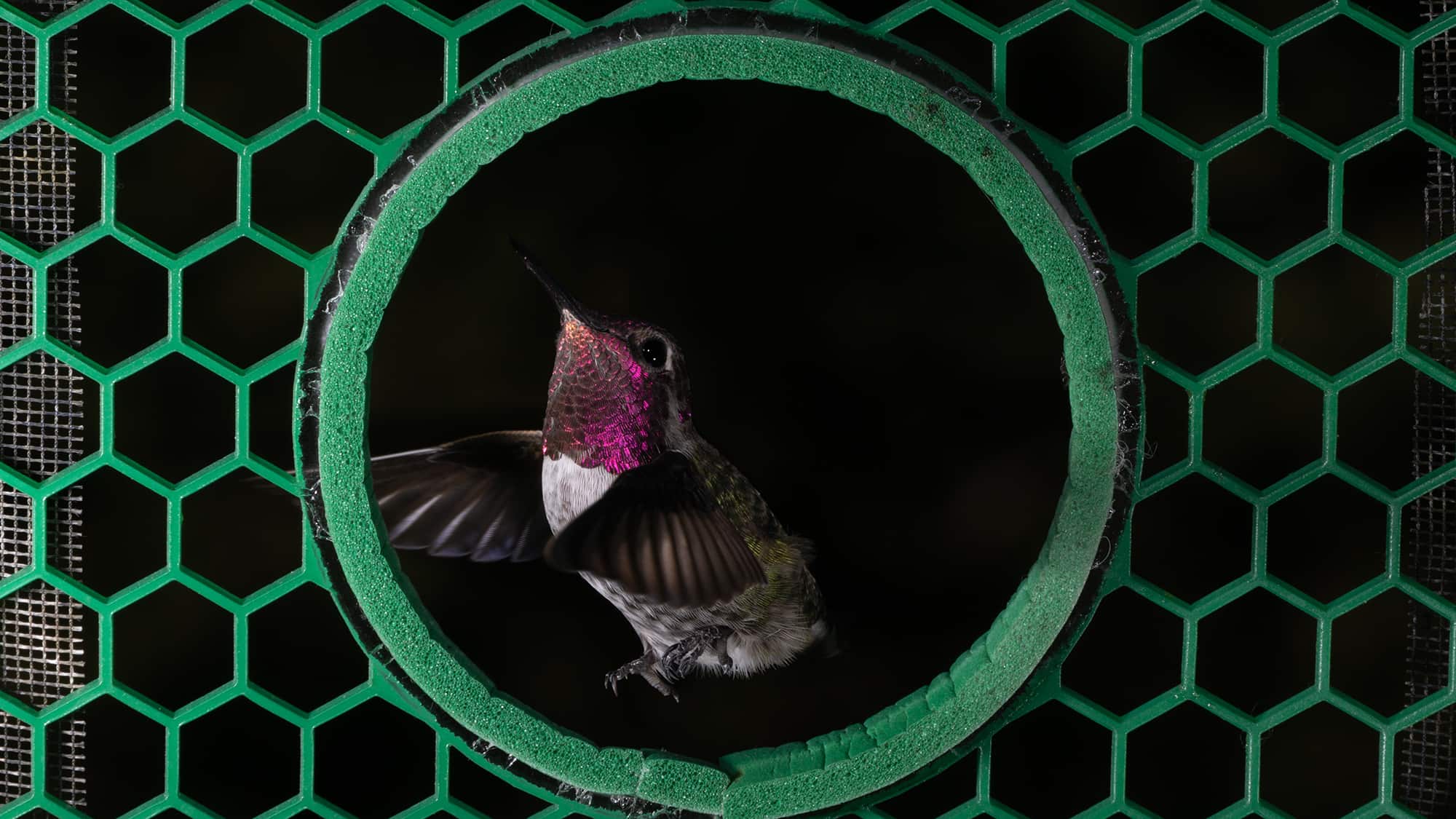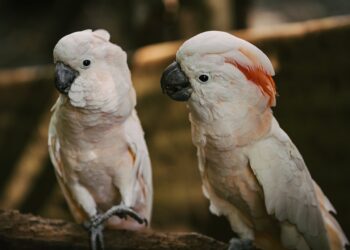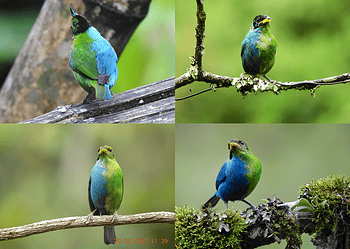When going through dense and leafy forests, most birds bend their wings at the ‘wrist’ or ‘elbow’ joint and barrel through. However, this isn’t an option for hummingbirds, who have to use different strategies to transit the gaps between leaves and branches. This remarkable solution hadn’t been effectively studied before as hummers move too fast for the human eye to see.

Now, researchers from the University of California, Berkeley, have finally found out how Anna’s hummingbirds (Calypte anna) slip through small openings despite being unable to fold their wings in. In their study, they found that the birds use two unique strategies that allow them to penetrate gaps that are barely half a wingspan wide.
In spaces with narrow gaps that cannot accommodate their wingspan, they maneuver sideways through the opening, continuously flapping their wings to maintain their altitude. For smaller openings, or when the birds are familiar with what lies beyond, they fold their wings and smoothly glide through, resuming flapping when it’s clear.
“For us, going into the experiments, the tuck and glide would have been the default. How else could they get through?” Robert Dudley, one of the study authors, said in a news release. “This concept of sideways motion with a total mix-up of the wing kinematics is quite amazing — it’s a novel and unexpected method of aperture transit.”
Obstacle course
To discover how hummingbirds — in this case, four local Anna’s hummingbirds (Calypte anna) — slip through tiny openings, the researchers set up a two-sided flight arena, with a 16-square-centimeter gap in the partition separating the two sides. Hummingbirds have a wingspan of about 12 cm, so the experiment was a challenge for them.
The researchers then came up with another idea. They placed flower-shaped feeders containing a sip of sugar solution on both sides of the partition, only remotely refilling the feeders after the bird had visited the opposite feeder. This encouraged the birds to continually flit between the two feeders through the aperture, the team found.
They then altered the aperture’s shape, from oval to circular, with variations in height, width, and diameter ranging from 12 cm to 6 cm. They used high-speed cameras to record the birds’ movements. Marc Badger, study author, developed a computer program to monitor the position of each bird’s bill and wing tips as they navigated through the aperture.
As the birds neared the aperture, they frequently paused in mid-air to assess it. Subsequently, they maneuvered through sideways, extending one wing forward while sweeping the other backward. Fluttering their wings to provide lift, they passed through the aperture. Then, they rotated their wings forward to resume their journey.
Alternatively, the birds retracted their wings, securing them against their bodies, and swiftly passed through the aperture — headfirst, resembling a bullet. Following the passage, they extended their wings forward again and resumed flapping. They seem to use this method when they get more familiarized with the system, Dudley argued.
Only 8% of the bids clipped their wings as they passed through the partition, although one had a collision. Even then, the bird recovered quickly. “The ability to pick among several obstacle negotiation strategies can allow animals to reliably squeeze through tight gaps and recover from mistakes,” Badger said in a media release.
The study was published in the Journal of Experimental Biology.






